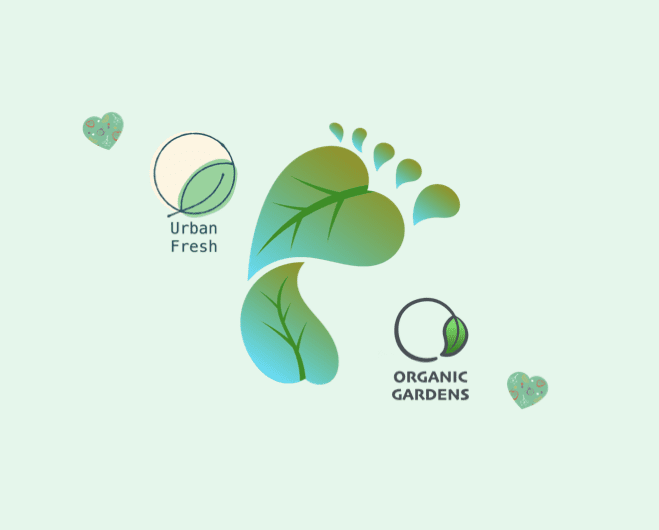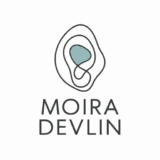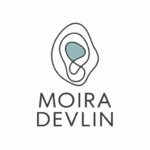Mastering Emotional Management in the Workplace
It was Oscar Wilde who said, “I don’t want to be at the mercy of my emotions. I want to use them, to enjoy them, and to dominate them.” (1).
Today, in the workplace, we require emotional management skills more than ever. A key soft skill for success in the 2020s. We need to do what Oscar says, as this decade is building up to be a tumulus one.
Are organisations doing enough to promote emotional wellbeing?

A study revealed low team morale more than doubled during the pandemic, over half said team leaders don’t acknowledge stress or work burnout and only 44% of managers encourage or allow venting or talking about work frustrations. Although one in three employees said this strategy brought teams together. (2)
Mastering the complexity of emotions isn’t just for individual employees. It affects everyone, from C suite executives and senior managers to supervisors and new recruits. Everyone deals with their own emotions while reacting to others.
What is an emotion?
In psychology, emotion is a sophisticated state of feeling. An emotion is “a complex reaction pattern, involving experiential, behavioural and physiological elements.” (3)
The behavioural expression of emotion can include candid behaviour, conscious and unconscious gestures, various postures and mannerisms. Emotions are how we handle events we find consequential. Our emotional experiences have three factors: a subjective experience, a physiological and a behavioural response.
We are emotional beings experiencing feelings and their aftermaths. Affecting each other with our feelings and moods. When we think we contain our emotions, they spill out, making positive or negative impressions on others.
Emotions and the workplace
There are many stressors in the workplace. Be it politics, pressure to complete a task, intensified workloads, restructuring. A new boss, changed responsibilities, and delivery against tight deadlines. M & A activity captures many of these issues with the emotional fallout. Let’s consider Brett’s situation.

It is 2035, Vertical Farming is taking horticulture to a new level. Brett has been working for Organic Gardens for the past 5 years. This was Brett’s first job straight from university.
Organic Gardens is a chain of urban farms in Asia. Brett is a horticultural engineer who plans, supervises and manages horticultural systems and product processing. Organic Gardens promoted Brett 2 years after joining to take over a team of 3 humans and 50 robots. Now Organic Gardens is acquired by Urban Fresh, a much larger food producer based in Europe.
Organic Gardens is a chain of urban farms in Asia. Brett is a horticultural engineer who plans, supervises and manages horticultural systems and product processing. Organic Gardens promoted Brett 2 years after joining to take over a team of 3 humans and 50 robots. Now Organic Gardens is acquired by Urban Fresh, a much larger food producer based in Europe.
Both organisations specialise in hydroculture, hydroponics and aeroponic food production. They have a similar proportion of humans and robots in their workforce. Senior leaders from Organic Gardens insisted on managing the communication to their workforce. But didn’t come out with a clear communication plan and restricted their conversation to confirming the acquisition. Rumours of headcount reduction, cost savings and restructuring are surfacing. Brett is experiencing sleepless nights and can’t focus on work. Wondering if it is time to look for a new job. With a sense of insecurity, Brett is fretting about only working for Organic Gardens. Plus concerned for the team and other colleagues too. There is a wonderful culture at Organic Gardens and Brett is dubious on the culture fit at Urban Farm. (4)
What approach should Organic Gardens and Urban Fresh adopt to support Brett?
It is organisational culture which dictates how relaxed employees feel about sharing their emotions. We shouldn’t dismiss or belittle emotions when we face them in an organisational setting. First, everyone needs to be adept at articulating and defining an emotion and what it means to them. Next, we need to know when to contain or manage our behaviours and notions about each emotion. Social context determines the causes of emotions. They involve behaviour, thoughts and culture. Cultural context doesn’t stop when we start our working day.
We have a responsibility for our emotions. They are the product of our culture and our behaviour over time. They are rational or irrational. And they go through a conscious or unconscious action. By defining and processing them, we train ourselves to react correctly on a case-by-case basis.
Employees need space to handle emotions and gain a sense of perspective. With safe spaces it means our reactions are more likely to be healthy and in context. This leads to a more productive and high performing workforce. If senior leaders are thinking about their emotions, there is an opportunity to create meaningful communication. They deliver authentic messages in a more thoughtful manner attuned to their personnel.
Emotion plays a powerful role in workplace settings. Some research suggested senior managers should pay attention to emotional management and develop succinct practical strategies for dealing with employees and their emotional space. As we know, a negative emotional environment in any organisation means reduction in performance, poorer delivery and affects any organisational success or personal career growth. (5)
Origins of Emotion
“Of all the baleful false dichotomies that stymie our understanding of the world’s complexity, nature versus nurture must rank among the top two or three” (6)

Do our genes set who we are or is it our environment?
Although the nature–nurture debate relates to traits and behaviours of all species, the focus is on humans. Francis Galton (7) started this and realised twin studies offer compelling analysis. A significant study conducted a meta-analysis of every twin study across the world from the past 50 years, involving over 14.5 million twin pairs. The findings disclosed on average the variation in traits and diseases is 49% genetic, and 51% environmental factors and/or measurement errors (8). Making it difficult to separate nature from nurture. Time to move on from nature versus nurture to nature and nurture to appreciate who we are.
Why does this matter to our emotions?
It tells us we aren’t enslaved by our emotions. And the biopsychosocial model (9) shows that biological (genetics), psychological (thoughts, emotions, behaviours), and social (environment, society, culture) factors play a significant role in personal development. By figuring out the role of our emotions in a social context, we learn how to define and maintain them. Furthermore, we become adept at knowing the emotions of others and how to react.
But a study suggested we find it challenging to get to the heart of an emotion and label it. It is difficult for us to identify and label the myriad of emotions we experience (10).
Psychologists agree emotions have physical and cognitive factors. In essence, we start with an event which triggers arousal. An interpretation follows this. Finally resulting in an emotion. Some theories determined some fixed universal basic emotions, e.g., happiness, sadness. With our basic emotions, we derive more complex emotions. Using the steps which build to an emotion assists us in defining and handling the psychological and social aspects effectively.
Four Fears of Change
Overtime there have been many explanations about the neural bases of emotion. Covering the role of our brains, bodies, and ensuing behaviours.
Our nervous systems relay signals between our brains and the rest of our bodies, including internal organs. It controls our ability to move, breathe, see, think, etc including feeling our emotions. It regulates our internal reactions to a trigger event.
How do we respond to a change event?
Change is viewed as suspect and considered a hazard. Part of the brain, the amygdala, reads change as a threat and releases hormones for fight, flight freeze or fawn. The body reacts to change by sensing it to defend us from it! (11)
We should be aware of our physical response, which affects how our emotions are revealed. Amongst other emotions, change in the workplace can make us fearful. This is a powerful emotion. Let’s go back to Brett.
Today, Brett found out that in the new structure, Brett will keep the same role with extended responsibility, but it will involve managing a team of 100 robots. This means losing 3 humans and gaining 50 extra robots. Brett’s range of emotions include: fear, anger, conflicted, and relief. (4)
How does fear appear?
Brett appears exhausted, sweating a lot, struggling with insomnia, and colleagues have commented that Brett’s face looks ashen and wonder if Brett is ill. In team meetings, Brett is struggling to speak, sometimes stuttering or mispronouncing words and takes on a watery smile when engaging with colleagues. Brett seems to stare into space and struggles to focus on work. On the inside, Brett is experiencing a racing heartbeat, dizziness, a hard stomach and is gulping down breaths. In Brett’s mind, there are racing thoughts of wanting to escape, to flee. Replaying images over and over of losing everything.
Brett needs to define and process each emotion to come to a satisfactory conclusion on the next steps and coping strategies. Sometimes we need support to do this.
Can organisations expect their personnel to shutoff their personal emotions as they start their workday and switch on their work emotions?
Severance is an award-winning TV series (12). It considers a dystopian future. In it we can have a medical procedure to separate work life and personal life. We don’t remember personal life at work or work life outside the workplace.
Apart from the motives and vulnerabilities of those choosing Severance, it asks a momentous question.
Even with an extreme brain intervention, can we divorce everything we think, feel and experience into work and personal environments? Maybe all isn’t as it seems and Series 2 will tell us!
Emotions stream through us. An emotion is a very complex internal psychological feeling affecting our thoughts and behaviours. By learning to define our emotions and their processes, we can express and manage them. If emotional skills are entwined into organisational culture employees become more content and productive in delivering business objectives. Leading to a more utopian future!
REFERENCES
(1) Wilde, Oscar (1891) The Picture 0f Dorian Gray. East India Publishing Company (2021)
(2) PAYCHEX (2021) Team Morale: Before & During COVID. https://www.paychex.com/articles/human-resources/team-morale-during-covid-19
(3) American Psychological Society Dictionary of Psychology (2023). https://dictionary.apa.org/emotion
(4) Devlin, Moira (2021) Mastery in the Making – Navigating the Future with Essential Life Skills Amazon, Apple Books, Google Play and Rakuten Kobo.
(5) Ashkanasy, Neal & Daus, Catherine. (2002). Emotion in the Workplace: The New Challenge for Managers. Academy of Management Executive. 16. 10.5465/AME.2002.6640191.
(6) Gould, Stephen Jay (1996) Encyclopedia of Applied Ethics 2nd Edition (p197-207) Allen, Garland (2012).The Nature-Nurture Debate, Editor: Chadwick, Ruth, Academic Press.
(7) Galton, Francis (1875). “On Men of Science, their Nature and their Nurture”. Proceedings of the Royal Institution of Great Britain. 7: 227–236.
Galton, Francis (1895). English Men of Science: Their Nature and Nurture. D. Appleton. p. 9. “Nature versus nurture Galton.”
(8) Polderman TJ, Benyamin B, de Leeuw CA, Sullivan PF, van Bochoven A, Visscher PM, Posthuma D. Meta-analysis of the heritability of human traits based on fifty years of twin studies. Nature Genetics. (2015) 47(7):702-9. doi: 10.1038/ng.3285. Epub 2015.
(9) Engel, George L (1977) “The need for a new medical model: a challenge for biomedicine”. Science. 196 (4286): 129–136.
(10) Gratz, Kim L., Roemer, Lizabeth (2004) Multidimensional Assessment of Emotion Regulation and Dysregulation: Development, Factor Structure, and Initial Validation of the Difficulties in Emotion Regulation Scale. Journal of Psychopathology and Behavioral Assessment 26, 41–54. https://doi.org/10.1023/B:JOBA.0000007455.08539.94
(11) Carlson, Neil R (2013), Physiology of Behaviour. 11th Edition, Pearson .
(12) Severance Series 1 (2022), directed by Ben Stiller and Aoife McArdle, written by Dan Erickson, Apple TV+ (2022)
© 2024 Lifexpression Limited. All Rights Reserved. © 2024 Moira Devlin. © 2024 Shutterstock.com. © 2024 Envato Pty Limited Images.


